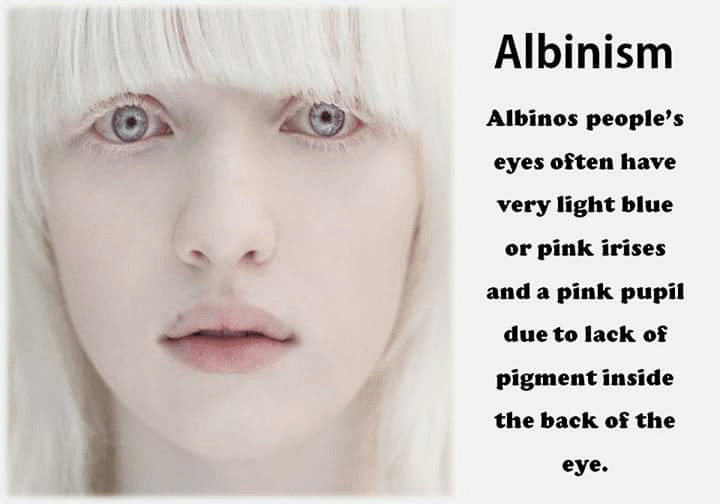Get the App
For Doctors
Login/Sign-up
Last Updated: May 06, 2016
BookMark
Report
Ocular Albinism
Ocular albinism in an inherited condition in which the eyes lack melanin pigment, while the skin and hair show normal or near-normal coloration.
The lack of pigment in the eyes causes various vision problems:
Reduced visual acuity from 20/60 to 20/400 and sometimes as good as 20/25 in African-Americans, Nystagmus - involuntary back-and-forth movement of the eyes, Strabismus - crossed eyes or "lazy" eye, and Sensitivity to bright light and glare.
The reduced visual acuity may result in difficulty in school, such as inability to read what is written on a chalkboard except when very close, and difficulty with ball sports. It may also result in inability to drive.
With ocular albinism, the color of the iris of the eye may vary from blue to green or even brown, and sometimes darkens with age. However, when an eye doctor examines the eye by shining a light from the side of the eye, the light shines back through the iris since very little pigment is present. There may be areas of the iris which have very little pigment.
The main problem with the eye in ocular albinism is in the fovea, small area of the retina which affords acute vision. With ocular albinism, the fovea does not develop completely, presumably because melanin pigment is needed for the growth processes that normally occur before birth. Therefore the eye cannot process sharp light images. Because the fovea does not develop well, it is difficult to correct vision completely with glasses.
Ocular albinism is more severe form of condition than oculo - cutaneous albinism where eyes are mildly affected.
Ocular albinism in an inherited condition in which the eyes lack melanin pigment, while the skin and hair show normal or near-normal coloration.
The lack of pigment in the eyes causes various vision problems:
Reduced visual acuity from 20/60 to 20/400 and sometimes as good as 20/25 in African-Americans, Nystagmus - involuntary back-and-forth movement of the eyes, Strabismus - crossed eyes or "lazy" eye, and Sensitivity to bright light and glare.
The reduced visual acuity may result in difficulty in school, such as inability to read what is written on a chalkboard except when very close, and difficulty with ball sports. It may also result in inability to drive.
With ocular albinism, the color of the iris of the eye may vary from blue to green or even brown, and sometimes darkens with age. However, when an eye doctor examines the eye by shining a light from the side of the eye, the light shines back through the iris since very little pigment is present. There may be areas of the iris which have very little pigment.
The main problem with the eye in ocular albinism is in the fovea, small area of the retina which affords acute vision. With ocular albinism, the fovea does not develop completely, presumably because melanin pigment is needed for the growth processes that normally occur before birth. Therefore the eye cannot process sharp light images. Because the fovea does not develop well, it is difficult to correct vision completely with glasses.
Ocular albinism is more severe form of condition than oculo - cutaneous albinism where eyes are mildly affected.



+1.svg)
